
The minor pentatonic scale is one of the first scales every guitarist should learn. It’s simple (only 5 notes), easy to memorize, and used in countless guitar solos by legends like Jimi Hendrix, Jimmy Page, and Slash.
Southpaws can often have a difficult time reading diagrams designed with right-handed players in mind. So, in this guitar lesson, you’ll learn the minor pentatonic scale in a lefty-friendly format.
The minor pentatonic scale is the most common gateway to soloing. By learning all five shapes, understanding the root notes, and connecting the boxes, you’ll unlock the entire fretboard.
Whether you’re into blues, rock, or metal, this is the essential scale that opens the door to guitar soloing.
5 Minor Pentatonic Scale Positions For Lefties
The easiest way to learn the left-handed minor pentatonic scale over the entire guitar neck is to split it up into smaller, more easily digestible shapes or patterns. I’ve shown the five different positions below. Pay special attention to the orange circles, as these are the root notes and will indicate which key you are playing in.
The numbers below each diagram indicate the frets, and the string names are shown to the left.
We’ll use A minor pentatonic in the following example charts. The notes contained in this scale are: A – C – D – E – G.
Position 1 – The Classic Minor Pentatonic Shape
Position one of the minor pentatonic scale is the best place to start because it’s the easiest to play, and remember. The root notes are clear, the shape is comfortable, and it’s the most commonly used position in solos. It also acts as a good home base that makes learning the other positions much easier.
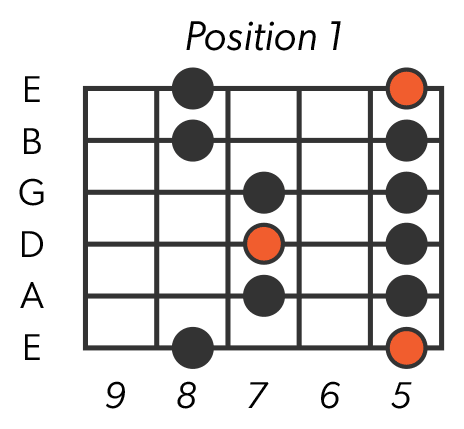
Many solos are written entirely inside this shape. Try playing random notes in this box, then land on a root to hear the “home” sound of A minor.
Position 2
Still beginner-friendly with only a mild stretch. The roots are on the 4th string 7th fret, and the 2nd string 10th fret.
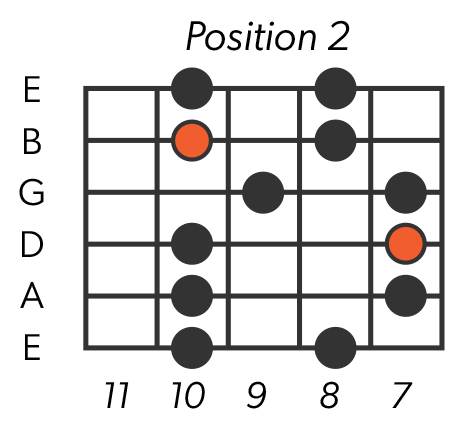
Position 3
A little wider under the fingers, but a natural next step up the neck. The root notes are on the 5th string 12th fret, and the 2nd string 10th fret.
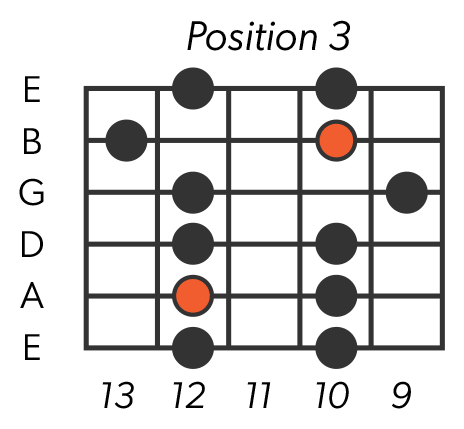
Position 4
High up where the frets are closer, so it feels tidy and easy to control. The roots are on the 5th string 12th fret, and the 3rd string 14th fret.
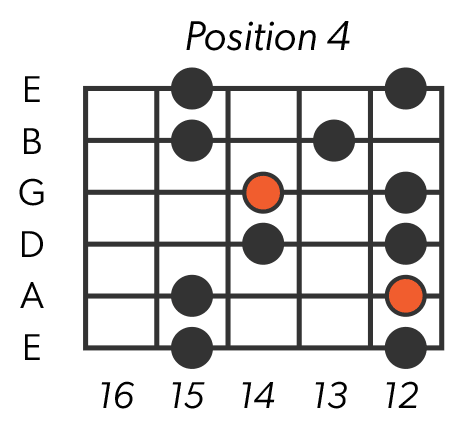
Position 5
This is one of the easier positions since it stays in a small fret area and has a nice symmetrical shape. The root notes are on the 6th string at the 5th fret, the 3rd string at the 2nd fret, and the 1st string at the 5th fret.
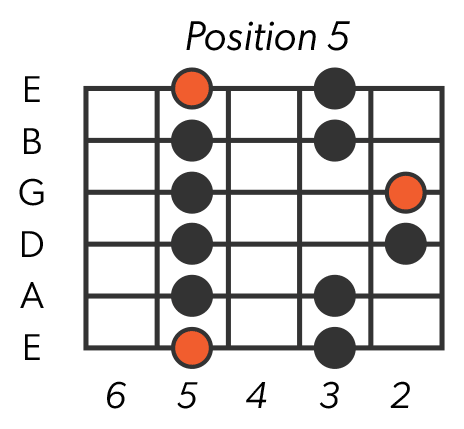
How to Connect All 5 Minor Pentatonic Boxes
All of these different patterns are interconnected, and note overlaps will occur between adjacent shapes. For example, positions one and two share six of the same note positions.
Take a look at the diagram below to see exactly how each pattern of the A Minor Pentatonic Scale connects and overlaps with the next.
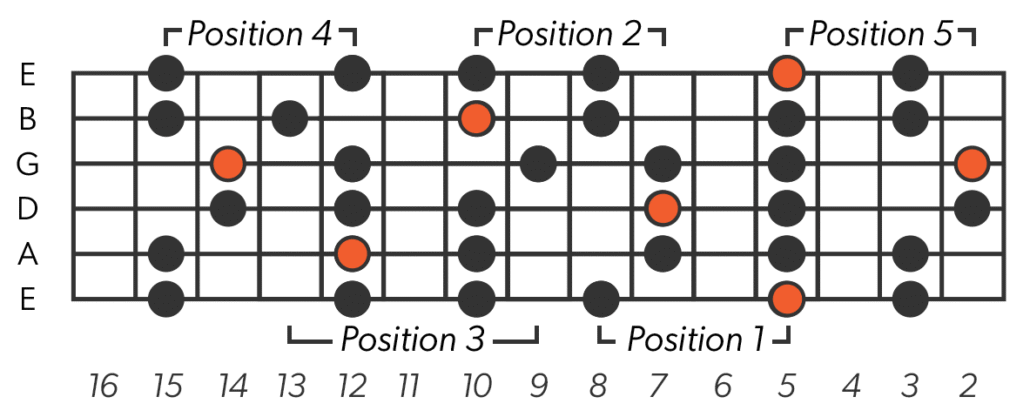
Think of each box as a “room.” The doors between them are the overlapping frets.
Start with Position 1 in A minor, then gradually add more boxes. Once you can move smoothly between them, try shifting to new keys like G minor or C minor. Combine this with backing tracks, and you’ll be improvising like your favorite guitarists in no time.
All Left-Handed Minor Pentatonic Charts
Check out all lefty Minor Pentatonic Scales below, or hit the button to download all of the charts as a handy PDF that you can print out and keep.
Download and Print the Scales











Practice With Jam Tracks
To practice these scales, why not head over to my list of guitar Jam Tracks where you will find thousands of free backing tracks.
More Left-Handed Lessons
You’ll find plenty more guides in the left-handed guitar lessons area of the site!

